Candolleomyces Wächter & A. Melzer, gen. nov. (Fig. 79)
Index Fungorum number: MB 832256; Facesoffungi number: FoF
Etymology: Named after the type.
Description: Basidiomata small to large, terrestrial, lignicolous, rarely fimicolous. Veil most likely always present but often very fugacious, as far as known fibrillose, scaly or granulose, consisting of chains of subcylindrical, partially slightly thick-walled and brownish pigmented cells; sphaerocysts may be characteristic as the second com- ponent of the veil. (see Fig. 78). Stipe occasionally with an annulus. Spores mostly medium-sized, laterally often phaseoliform, pale to medium dark, germ pore central, but often invisible. Basidia 4-spored. Marginal cells of the lamellar edge utriform, subutriform, subcylindrical, never predominantly lageniform, as well as clavate or sphaeropedunculate, rarely exclusively showing the lat- ter forms. Pleurocystidia absent. Clamps at least in the majority of species present.
Type species: Candolleomyces candolleanus Wächter & A. Melzer (see Fig. 77).
Representatives:
Psathyrella badhyzensis Kalamees; Ref.v.: TAA79478/ type (Örstadius et al. 2015)
Psathyrella badiophylla (Romagn.) Bon; Ref.v.: SZMC- NL-2347 (Nagy et al. 2011)
Psathyrella cacao Desjardin & B. A. Perry; Ref.v.: SFSU DED 8339/type (Desjardin and Perry 2016)
Psathyrella candolleana (Fr.) Maire; Ref.v.: LAS73030/ type (Örstadius et al. 2015)
Psathyrella efflorescens (Sacc.) Pegler; Ref.v.: Pegler2133 (Örstadius et al. 2015)
Psathyrella leucotephra (Berk. & Broome) P.D. Orton; Ref.v.: LO138-01 (Örstadius et al. 2015)
Psathyrella luteopallida A.H. Sm.; Ref.v.: Sharp20863/ type (Örstadius et al. 2015)
Psathyrella singeri A.H. Sm.; Ref.v.: HMJUA37867 (Yan and Bau 2018)
Psathyrella subsingeri T. Bau & J.Q. Yan; Ref.v.: HMJAU37913 (Yan and Bau 2018)
Psathyrella sulcatotuberculosa (J. Favre) Einhell.; Ref.v.: LO55-12 (Battistin et al. 2014)
Psathyrella trinitatensis R.E.D. Baker & W.T. Dale; Ref.v.: TL9035 (Örstadius et al. 2015)
Psathyrella typhae (Kalchbr.) A. Pearson & Dennis; Ref.v.: LO21-04 (Larsson and Örstadius 2008)
Remarks:
See also radial phylogram Fig. 35.
The numerous subclades or clusters with vouchers desig- nated as P. candolleana illustrate the already known fact that it is a collective species. More information about this could give the sequencing of Romagnesis types of P. elegans (Romagn.) Bon, P. proxima (Romagn.) Bon and P. scotospora (Romagn.) Bon, which are currently considered synonyms of P. candolleana, but are probably independent species. The type of P. candolleana is in the subclade
/candolleana ss. str.; whether these would split up is question- able and they are surely morphologically hardly compre- hensible. Also interesting is the fact that several well- demarcated subclades contain no designated vouchers. This seems to be an indication that the closer circle of P. candolleana on the one hand is more species-rich than previously thought. On the other hand, hardly unique features are present, which allow an identification by conventional methods. Whether P. badhyzensis and P. trinitatensis are independent species is questionable. For the following species, the determination sensu orig. is genetically insufficiently confirmed, because the types were not tested, but the morphology clearly refers to the genus:P.albipes (Murill) A.H. Sm., P. paecilosperma Pacioni, P. pseudocandolleana A.H. Sm. and P. tuberculata (Pat.)
A.H. Sm. Phylogenetically unequivocal is the position of P. halophila Esteve-Raventós & Enderle because of the ap- propriate investigation by Broussal et al. (2018). The same applies to P. secotioides G. Moreno, Heykoop, Esqueda & Olariaga due to the results in Moreno et al. (2015), and P. aberdarensis A. Melzer, Kimani & R. Ullrich, see Melzer et al. (2019, “2018”).
The following species should bechecked :
P.acutisquamosa Dennis, P. aequatoriae Singer,
P.albocapitata Dennis, P. araguana Dennis,
P.argillospora Singer, P. armeniaca Peg l er,
P.atroumbonata Pegler, P. avilana Dennis, P. coprinoceps
(Berk. & M.A. Curtis) Dennis, P. erinensis Dennis, P.glandispora Pegler, P. glaucescens Dennis, P. lacuum Huijsman, P. lignatilis Singer, P. longicystidiata Heykoop & Moreno, P. marthae Singer, P. microsporoides Heykoop & G. Moreno, P. naivashaiensis Pegler, P. pallidispora Dennis, P. pervelatoides S.J. Seok & Y.S. Kim, P. pruinosa Rawla, P. pusilla Pegler, P. roystoniae (Earle) A.H. Smith, P. trigonospora Dennis, P. varicosa A. Pearson.
Certainly, there are many more species, but they are often not very characteristic and therefore difficult to distinguish from others. A limitation to reasonably known species is ad- vised for this reason.
Within section Candolleana, there several sequences of Cercospora spec. are included. This phenomenon occurs ex- clusively in section Candolleana. A sequencing error can be excluded for explanation, especially since the authors and the collection regions of the Cercospora spec. sequences vary. This would mean that two unrelated genera have an almost identical ITS region, which is extremely unlikely. This phe- nomenon cannot be clarified at present.
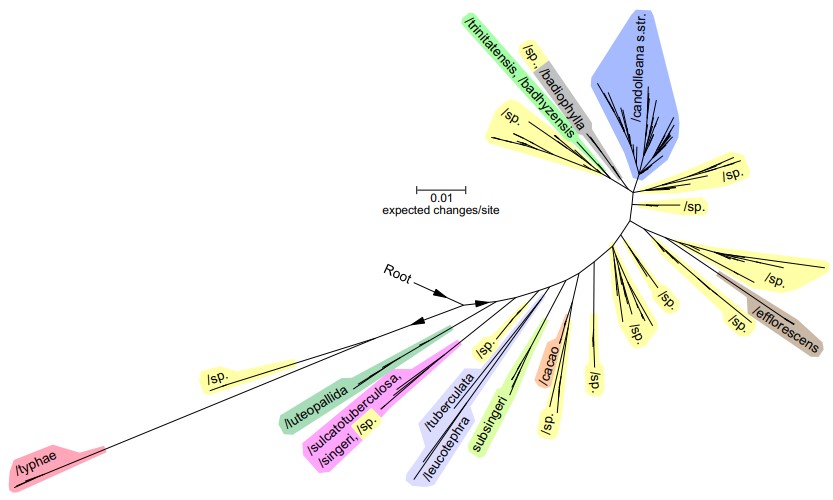
Fig. 35 335° radial consensus phylogram of the clade /candolleana. The angle is closed for better view about 25°
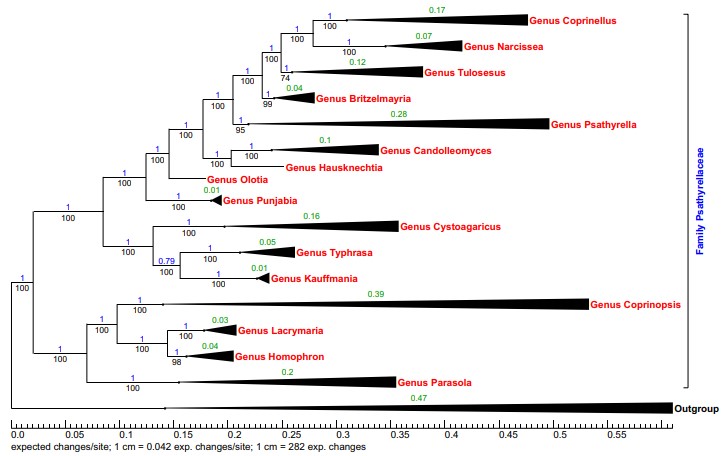
Fig. 42 Super collapsed phylogram of the complete family Psathyrellaceae incl. outgroup
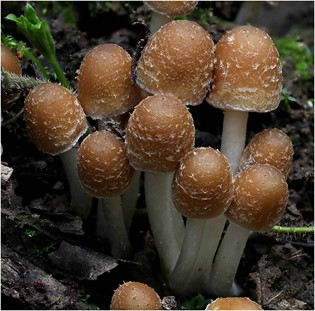
Fig. 77 Candolleomyces candolleanus agg., coll. Reul 4162;Photograph: M. Reul
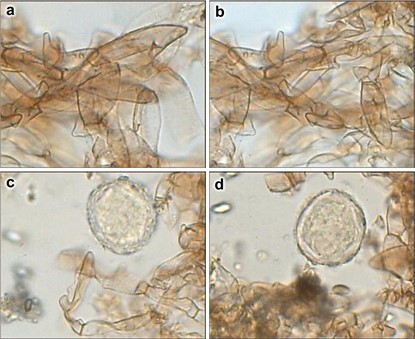
Fig. 78 Veil elements of Candolleomyces bivelata, coll. Melzer AM1802; a, b subcylindrical cells; c, d spherocysts; Photographs:A. Melzer
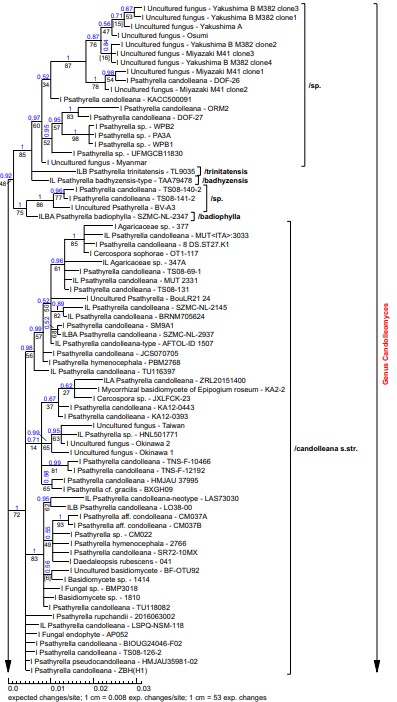
Fig. 79 Phylogram part of the genus Candolleomyces; position in tree see Fig. 42
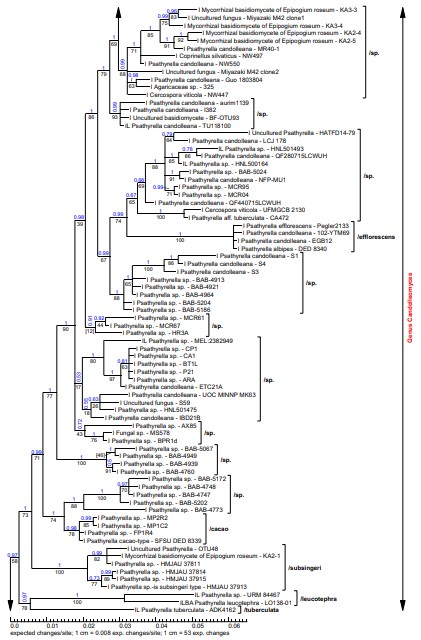
Fig. 79 (continued)
Species
